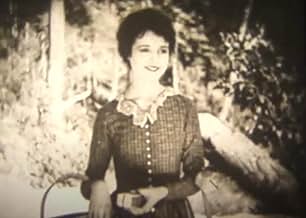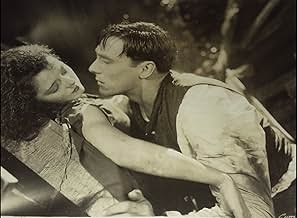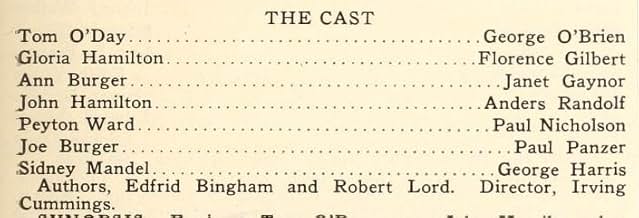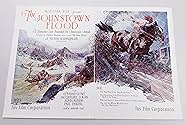Füge eine Handlung in deiner Sprache hinzuFollows Tom O'Day, who is loved by two women: Anna Burger and Gloria Hamilton. He has no idea of Anna's love for him, and he becomes engaged to Gloria.Follows Tom O'Day, who is loved by two women: Anna Burger and Gloria Hamilton. He has no idea of Anna's love for him, and he becomes engaged to Gloria.Follows Tom O'Day, who is loved by two women: Anna Burger and Gloria Hamilton. He has no idea of Anna's love for him, and he becomes engaged to Gloria.
Elmo Billings
- Young Boy
- (Nicht genannt)
Gary Cooper
- Flood Survivor
- (Nicht genannt)
Kay Deslys
- Dance Hall Queen
- (Nicht genannt)
Clark Gable
- Townsman Standing at Bar in Saloon
- (Nicht genannt)
Fred Gamble
- Townsman
- (Nicht genannt)
Florence Lawrence
- Townswoman
- (Nicht genannt)
Carole Lombard
- One of Gloria's Four Friends
- (Nicht genannt)
- …
Babe London
- Saloon Dance Hall Performer
- (Nicht genannt)
Handlung
WUSSTEST DU SCHON:
- WissenswertesCarole Lombard (uncredited) plays one of Gloria's four friends, who are all in three key scenes: one in which they are eavesdropping while Tom proposes marriage, another while Gloria is getting dressed for her wedding, and finally as bridesmaids at the wedding. Lombard is standing directly between and behind Tom and Gloria. Clark Gable (also uncredited) can be recognized as one of a group of men standing in front of a bar in a briefly glimpsed medium shot. (Gable and Lombard did not actually meet until several years later when they starred opposite each other in No Man of Her Own (1932).) Gary Cooper also appears in a small part - actually two small parts, as both a flood victim and a survivor.
- PatzerThe film has railroad tracks crossing right in front of the dam. The dam fails just as the train carrying the villain (in the form of the timber company owner and architect of this disastrous flood) crosses in front of it. Evidently, this was the director's effort to have the villain punished for his wicked deed of putting profit over lives. BUT there was no railroad crossing in front of the dam. And as there was no timber concern there was no evil company owner/villain to punish. YET there was a railroad running much of the valley through which the flood traveled to Johnstown. And this is where one of the greatest heroes of the disaster achieved notoriety. An engineer, John Hess, heard the rumbling of the approaching flood, threw his engine into reverse and raced backwards down the valley, ahead of the flood, blowing his whistle to warn people of the approaching disaster (this warning saved many people who were able to reach high ground and safety). Eventually, the flood waters caught up to the train and knocked off the tracks (and added it to the debris field at the head of the flood). Fortunately, this true hero did survive this ordeal. So, no train tracks in front of the dam, and no villain to punish. BUT a railroad down the valley in front of the flood, and a genuine hero to boot. One must ask why the director felt it necessary to choose a completely fictitious story with a villain, when he could have chosen a TRUE story of heroism.
- Zitate
John Hamilton, Lumber Camp Boss: Repaired that dam yet?
- Alternative VersionenPROLOGUE TO 2023 RESTORED PRINT: "The restoration of The Johnstown Flood, a William Fox produced--Irving Cummings directed motion picture --- was made was only made possible because The George Eastman Museum had the foresight to both preserve the unique original 35mm nitrate print and then create preservation elements. The first five reels of the original tinted nitrate have been scanned by GEM in 4k, along with the final real of there 35 mm preservation duplicate negative. For the restoration, those data files have been digitally cleaned and repaired, short main and end titles with missing footage have been brought to the original length, with fades receiving attention as well. One missing inter-title has been re-established based upon the original screenplay, and minor nitrate deposition has been repaired. In a couple of instances where the decomp was severe, we made the decision to allow it to remain as it was for its educational benefit toward film preservation, restoration, and the need to support organizations like GEM. The Johnstown Flood was produced in 1926. it is a product of its time that tells a story that took place in 1889 --- twenty-four years after the end of the Civil War. The film may depict some racial and ethnic prejudices that were the unfortunate norm in America at that time. they were short-sighted and painful then, and can still be upsetting today. Those behind the preservation and restoration of this film are presenting the work as originally created." "To do otherwise would be akin to suggesting that these prejudices never existed."
- VerbindungenEdited into Flaming Frontiers (1938)
Ausgewählte Rezension
This remarkable silent film currently exists in a truncated print of poor quality available for download and viewing on YouTube. It is hardly known today, and probably its principal fame rests with the fact that it stars George O'Brien and Janet Gaynor--who went on to considerable movie celebrity from the latter 1920s through the mid-1930s. O'Brien and Gaynor appeared together one more time in the F. W. Murnau classic Sunrise in 1927. The Johnstown Flood movie also contains very brief extra appearances by future stars Clark Gable, Gary Cooper and Carole Lombard. Its secondary importance rests on the film's impressive special effects work--outstanding for the time--in depicting the famous 1889 dam collapse that occurred near Pittsburgh, PA. The flood scenes compare quite favorably with those in the famous early disaster film Deluge (1933)--made some seven years later.
The actual Johnstown Flood was a monumental catastrophe---horribly and unnecessarily killing over 2200 people. The real story of this incident---with all its twists and irony definitely deserves a proper screen treatment today. Many liberties were taken with the pertinent facts in making the 1926 film version. A historically accurate retelling of the actual Johnstown Flood would be far more interesting and compelling to contemporary audiences than the rather dated melodrama that appears here.
Nevertheless, this film is important for what it does show--two (then) young up and coming stars making strong appearances in a significant early Hollywood effort--and exciting special effects that foreshadowed the even greater accomplishments in this area that were soon to amaze us in just a few years.
The actual Johnstown Flood was a monumental catastrophe---horribly and unnecessarily killing over 2200 people. The real story of this incident---with all its twists and irony definitely deserves a proper screen treatment today. Many liberties were taken with the pertinent facts in making the 1926 film version. A historically accurate retelling of the actual Johnstown Flood would be far more interesting and compelling to contemporary audiences than the rather dated melodrama that appears here.
Nevertheless, this film is important for what it does show--two (then) young up and coming stars making strong appearances in a significant early Hollywood effort--and exciting special effects that foreshadowed the even greater accomplishments in this area that were soon to amaze us in just a few years.
Top-Auswahl
Melde dich zum Bewerten an und greife auf die Watchlist für personalisierte Empfehlungen zu.
- How long is The Johnstown Flood?Powered by Alexa
Details
- Laufzeit1 Stunde 6 Minuten
- Sound-Mix
- Seitenverhältnis
- 1.33 : 1
Zu dieser Seite beitragen
Bearbeitung vorschlagen oder fehlenden Inhalt hinzufügen

Oberste Lücke
By what name was The Johnstown Flood (1926) officially released in India in English?
Antwort





















